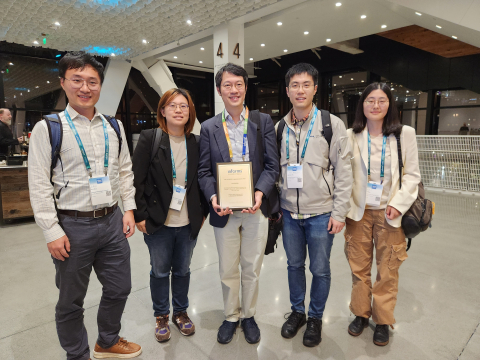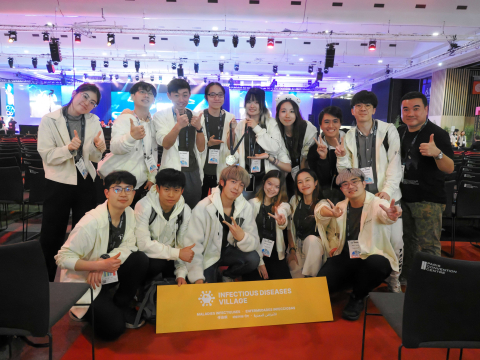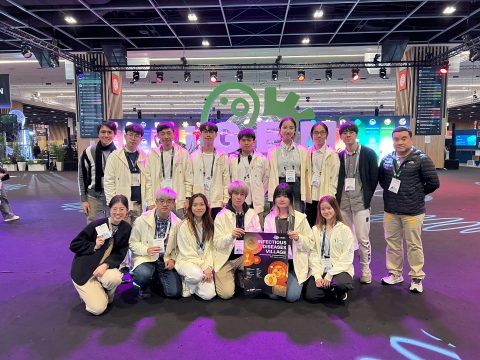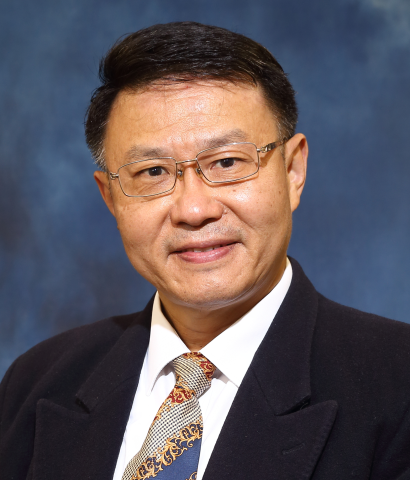The HongKong-CUHK iGEM 2024 Team has been awarded a Gold Medal at the International Genetically Engineered Machine (iGEM) 2024 Grand Jamboree, held in Paris, France, from October 23 to 26, 2024. In addition to the prestigious Gold Medal, the team was nominated for the Best Education Award in the undergraduate section. The Hong Kong-CUHK team has been distinguished as one of only five nominees globally, joining one winner and three other nominees in this category.
Co-supervised by Professor NGO Chi Ki Jacky from the School of Life Sciences, Professor CHOI Chung Hang Jonathan from the Department of Biomedical Engineering, and Professor CHAN Ting Fung from the School of Life Sciences, the team comprises six undergraduate students from the Department of Biomedical Engineering and five from the School of Life Sciences. Additionally, four postgraduate students from the School of Life Sciences serve as instructors for the team.
The HongKong-CUHK iGEM 2024 Team developed ResiSense, a rapid point-of-care test kit for detecting bacterial antibiotic resistance genes. ResiSense offers a fast and cost-effective technology for accurately identifying antibiotic resistance, addressing a global health crisis exacerbated by antibiotic misuse and overuse, which is responsible for millions of deaths, particularly in underdeveloped regions. Current diagnostic methods often require highly trained personnel and expensive on-site equipment, making them impractical in low-resource settings. To mitigate these challenges, the team proposed ResiSense, a cell-free point-of-care strategy designed to rapidly detect bacterial antibiotic resistance genes.
In the presence of a targeted resistance gene, a selected G-quadruplex DNAzyme is produced from a specially designed DNA template through rolling circle amplification (RCA). The DNAzyme oxidizes colorless tetramethylbenzidine (TMB) into blue TMB⁺, enabling colorimetric detection. As proof of concept, the team generated a non-infectious Escherichia coli strain containing a snippet of blaKPC2, an antibiotic resistance gene from Klebsiella pneumoniae, and successfully detected the gene via the RCA-generated DNAzyme.
About iGEM
The International Genetically Engineered Machine (iGEM) is a leading global synthetic biology competition held annually for high school, undergraduate, and postgraduate students. Founded by the Massachusetts Institute of Technology (MIT) in 2004, iGEM aims to enhance education in synthetic biology, encourage collaboration, and nurture talent in the field. iGEM projects focus on utilising synthetic biology to address real-world challenges through research, both within and beyond the laboratory.
At the end of each iGEM season, a Grand Jamboree is held where each team presents their work to judges and other teams at a designated venue. The 21st Jamboree in 2024 featured a total of 414 participating teams from over 50 countries and regions, with approximately 5,000 attendees.
More details: https://www.bme.cuhk.edu.hk/new/files/iGEM2024teamwinsgold.pdf














